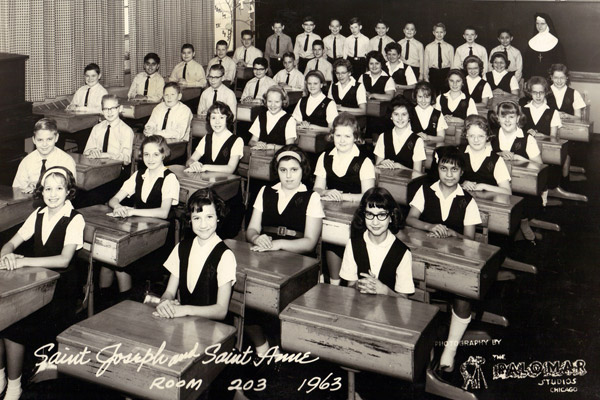
Breaking: people who get along with other people really well tend to make more money. That's the conclusion of a paper (PDF) led by Gabriella Conti of the U. of C.'s Harris School, which uses data from the Wisconsin Longitudinal Study, which is the upper Midwestern social-science equivalent of Michael Apted's Up films. It started with over 10,000 people who graduated from high school in Wisconsin in 1957, and has been following them ever since; as the first big American adolescent longitudinal study, it's generated reams of information about pre-baby boomers and their evolution
For this study, the authors asked people who their three (same-sex, same school class) BFFs were in high school. People who got named a lot were considered popular, and the authors took a look at how they did versus the people who didn't show up as much: "We estimate that moving from the 20th to 80th percentile of the high-school popularity distribution yields a 10% wage premium nearly 40 years later." If it doesn't sound like much, consider this: "For a median individual, a decile increase in the stock of social skills, corresponding to a 1-unit increase in the expected number of friendship nominations in high school, is worth a (statistically signi cant) 2% higher wage 35 years later. This popularity premium is roughly 40% of the wage premium of an additional year of education."
Irritatingly, the Washington Post's Sarah Kliff frames this as proof that nerds are screwed, then tries to take it back: "Contrary to any nerd stereotypes, students who were smarter (and also older) tended to receive more friendship listings than their younger or less intelligent peers." Sigh:
We find a tendency for high-IQ students to nominate more friends and to be popular in turn, suggesting that high ability students might be more attractive as peers and better understand the opportunities arising from social interactions. However, the eff ect is modest: a 1-standard deviation increase in IQ leads to an increase of around 0.16 in the expected out-degree, and a larger e ffect of 0.38 in the in-degree.
("Out-degree" just means how many friends people named; "in-degree" means how many times people were named as being friends.)
More important than IQ was something anyone who went to high school should recognize: the most significant effect was parental origin, followed by having a "professional/managerial" father. (Not a professional/managerial mother, but this was 1957.) Mother's affection was also a more significant determinant than IQ.
Also a mild irritant from the Post:
The authors consider a few theories of why popular students might earn more, including the possibility that the connections they make in high school might lead to more opportunities down the road. They settle on a simpler explanation as the most likely: The traits that make a student better-liked are pretty similar to those that make one successful in the workforce.
Social interactions in high school “train individual personalities to be socially adequate for the successful performance of their adult roles,” the researchers conclude. “Consistent with our view, we interpret our measure of popularity as a measure of the stock of social skills of a particular individual.”
This makes it sound a bit like the authors chalked it up to some folks being awesome and left it there. Not quite:
As a by-product of our estimation strategy, we also provide novel evidence on the determinants of popularity. Of particular interest is the role played by early family environment, school composition and school size on adolescent social engagement. While current research focuses on the e ffect of class size on cognitive achievement (Angrist and Lavy [1999], Hoxby [2000]), our results suggest that a deeper understanding of the e ect of school size and composition on the development of social skills is needed. Policies that focus on promoting integration in schools and on developing social competencies may be a fruitful way of promoting success in life.
A 2005 paper, using the WLS and a similar approach, had similar findings and yet more recommendations (PDF), after looking not just at the cool kids, but the uncool ones ("The results for the socially isolated deserve special attention. The magnitude of the wage differential, relative to an average person, is enormous: between 43 and 25 percent"):
This work provides strong empirical evidence suggesting that both, pedagogical practices and class size, play a crucial role in the determination of the structural properties of school class social networks. For example, an empirical regularity is that social networks of larger classes exhibit a higher number of disconnected groups, which implies a higher level of segregation within the class.
When discussing the relation between our measures of position and class size we found a positive relation between being socially isolated and being in a bigger class. Such a relation was absent for the other types. It appears that student networks in smaller classes exhibit a higher degree of connectedness with fewer nodes being infinitely distant. Reducing class size means reducing social distance among members and, on an individual level, implies a lower incidence of social isolation.
So it's not just a matter of the cool kids locking in their gains early; there are pedagogical implications, in particular for the most isolated students—but you'd have to pay attention to someone other than the popular kids to notice.
Photograph: Michael 1952 (CC by 2.0)



